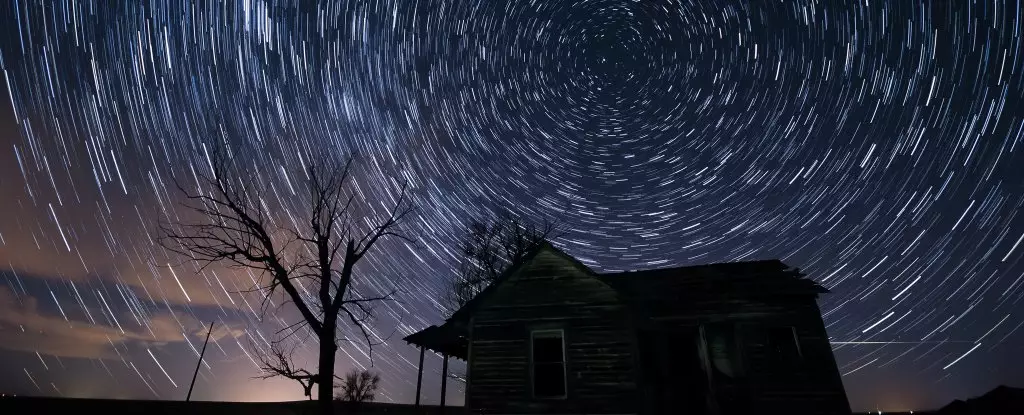As a new year begins, January 2025 positions itself as a remarkable month for skywatching enthusiasts. The kickoff weekend offers a series of astronomical marvels, including a captivating meteor shower, the intriguing occurrence of a ‘SuperSun,’ and a dramatic planetary alignment featuring the Moon and Saturn. Let’s delve into the exciting events taking place in this potent start to the year.
Quadrantid Meteor Shower: A Heavenly Display
The first highlight is the Quadrantid meteor shower that peaks on January 4th, featuring an impressive Zenithal Hourly Rate (ZHR) projected at 80 meteors per hour. The beauty of this shower lies in its timing; the waxing crescent Moon, only 27% illuminated, will not obstruct the visibility of these meteors, enhancing the chances for avid stargazers to witness this astral event in its full glory. Observers in the northern Pacific region will enjoy a prime viewing experience at dawn, right around the peak hours of 15:00 to 18:00 Universal Time (UT) on January 3rd.
Although the Quadrantids often elude observers due to their brief peak and chilly January nights, the opportunity remains ripe for North American and European stargazers to enjoy the spectacle on both the 3rd and 4th of January. The fascinating origin of the Quadrantids, linked to the now-defunct constellation of Quadrans Muralis, adds a layer of historical intrigue to the event. Dissected among modern constellations like Draco and Boötes, this meteor shower reflects a rich astronomical heritage that deserves attention.
Adding to the astronomical excitement is Earth’s perihelion on January 4th, when our planet reaches its closest point to the Sun. Positioned at approximately 0.98333 astronomical units, this occurs around 13:00 UT, a significant yet often overlooked fact. It’s ironic that during the northern winter, Earth is at its nearest point to the Sun, while southern regions bask in summer warmth. This peculiar alignment offers a unique opportunity to consider broader cosmic cycles—such as Milankovitch cycles—reminding us that celestial mechanics shape our seasons in complex ways.
Interestingly, while orbiting this close to the Sun, the apparent size of our star appears larger compared to its distant counterpart during aphelion in July. This phenomenon, albeit slight, underscores the dynamic relationship between Earth and the Sun, inviting observers to appreciate the subtleties of their cosmic surroundings.
A key event to mark on your calendar is the Moon’s occultation of Saturn on January 4th at approximately 17:24 UT. This captivating astronomical occurrence will best serve European viewers, who will be treated to a rare sight as the crescent Moon passes directly in front of the ringed planet. As Saturn gradually disappears behind the dark side of the Moon, it will momentarily create a visual spectacle that captivates the spirit of observational astronomy.
Saturn, shining at a magnitude of +1 and extending a width of 39 arcseconds—including its beautiful rings—will take about 45 seconds to 1 minute to fully vanish from view. The following alien delight comes from Saturn’s reappearance on the illuminated side of the Moon, making it a must-see for enthusiasts tracking celestial events. This will mark the first planetary occultation of 2025, with another scheduled for February 1st, providing several opportunities for observers.
For those unable to witness the above events in person—due to inclement weather or geographic location—there are virtual sessions hosted by astronomer Gianluca Masi. These sessions, dedicated to the Quadrantids, the Moon-Saturn occultation, and later planetary alignments featuring Venus, allow keen stargazers to engage with these celestial phenomena directly from their homes.
As the Moon dances past Saturn, it will also parade near Venus, intensifying the astronomical allure of January 3rd. Moreover, stargazers can anticipate the Moon’s rendezvous with Jupiter and Mars further along in the month, promising even more thrilling celestial encounters.
January 2025 prepares to launch an exciting year of skywatching, filled with vibrant celestial activities. Regardless of where you are in the world, whether snug indoors or braving the winter chill to observe the night sky, be sure to gear up for this magnificent astronomical experience. Embrace the cold, cherish the beauty of the cosmos, and immerse yourself in the wonders of the universe.

